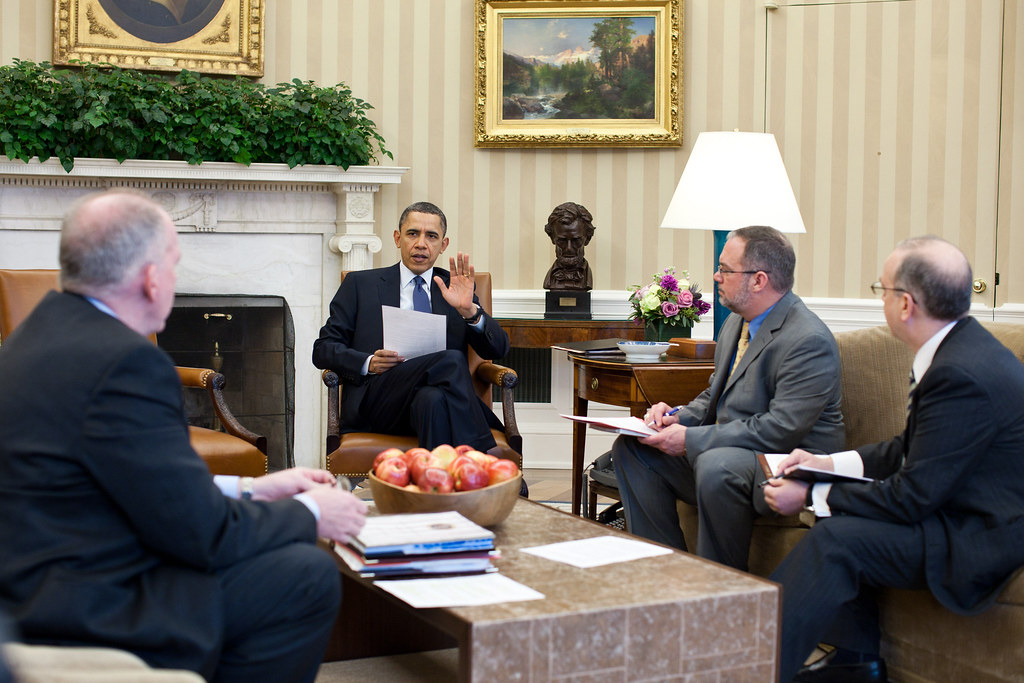
This morning the President wasted no time in offering his condolences and America's assistance to the people of Japan, issuing the following statement:
Michelle and I send our deepest condolences to the people of Japan, particularly those who have lost loved ones in the earthquake and tsunamis. The United States stands ready to help the Japanese people in this time of great trial. The friendship and alliance between our two nations is unshakeable, and only strengthens our resolve to stand with the people of Japan as they overcome this tragedy. We will continue to closely monitor tsunamis around Japan and the Pacific going forward and we are asking all our citizens in the affected region to listen to their state and local officials as I have instructed FEMA to be ready to assist Hawaii and the rest of the US states and territories that could be affected.
In addition, the White House just released the following outline of the President's briefings:
President Obama Receives Briefing on the Earthquake in Japan and the Tsunami Preparedness and Response Actions in the United States
WASHINGTON—President Obama received a briefing this morning at 9:30 a.m. in the Oval Office on the earthquake in Japan and the tsunami warnings across the Pacific from a number of senior US government officials including Homeland Security Secretary Janet Napolitano and Federal Emergency Management Agency Administrator Craig Fugate via phone, and in the Oval Office with Chief of Staff Bill Daley, Assistant to the President for Homeland Security John Brennan, National Security Advisory Tom Donilon, Deputy National Security Advisor Denis McDonough, Senior Advisor David Plouffe, Deputy Chief of Staff Alyssa Mastromonaco, National Security Staff Senior Director for Resilience Richard Reed and National Security Staff Director Asian Affairs Daniel Russel.
The senior officials provided the President with an update on the evolving situation stemming from the earthquake and subsequent tsunami that struck Japan early this morning including the actions being taken to assist U.S. states and territories that could be affected by the tsunami, as the President directed earlier this morning – as well as the work being done to be prepared to assist the people of Japan.
The US government continues to monitor the situation closely throughout the Pacific region. To support potentially impacted areas in the United States, the federal government remains in close contact and coordination with state and local officials, and stands ready to support them. The government’s message to the public is simple: listen to the instructions of state and local officials. We urge everyone in the regions who could be impacted to listen to a NOAA Weather Radio and their local news to monitor for updates and directions provided by their local officials.
UPDATE: The President again spoke again on the situation during the opening of his press conference:
Good morning, everybody. Before I begin, I want to say a few words about the terrible earthquake and tsunami that struck Japan earlier today.
First and foremost, our thoughts and our prayers are with the people of Japan. This is a potentially catastrophic disaster and the images of destruction and flooding coming out of Japan are simply heartbreaking. Japan is, of course, one of our strongest and closest allies, and this morning I spoke with Prime Minister Kan. On behalf of the American people, I conveyed our deepest condolences, especially to the victims and their families, and I offered our Japanese friends whatever assistance is needed.
We currently have an aircraft carrier in Japan, and another is on its way. We also have a ship en route to the Marianas Islands to assist as needed. The Defense Department is working to account for all our military personnel in Japan. U.S. Embassy personnel in Tokyo have moved to an offsite location. And the State Department is working to account for and assist any and all American citizens who are in the country.
Tsunami warnings have been issued across the Pacific, and we’ve already seen initial waves from the tsunami come ashore on Guam and other U.S. territories, in Alaska and Hawaii, as well as on -- along the West Coast. Here in the United States, there hasn’t been any major damage so far. But we're taking this very seriously, and we are monitoring the situation very closely. FEMA is fully activated and is coordinating with state and local officials to support these regions as necessary. And let me just stress that if people are told to evacuate, do as you are told.
Today’s events remind us of just how fragile life can be. Our hearts go out to our friends in Japan and across the region and we’re going to stand with them as they recover and rebuild from this tragedy.



